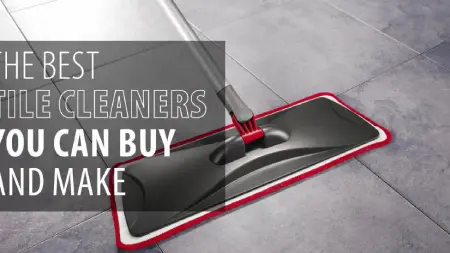
Rainbow Restoration highlights top tile cleaners, both store-bought and homemade, for effective tile maintenance.
|
Though the majority of the population has tiles somewhere in their home, choosing a suitable and effective tile-cleaning solution seems to flummox the best of us. Does it need to be strong to penetrate dirt? Mild to protect tile? Who knows? We do.
Keep pH Neutral
Sharon Jones, a professional from the Tile Council of North America, advises against the use of cleaning agents such as bleach and vinegar. Though your tile may look pretty immediately after you’re done dousing it in full-strength vinegar or bleach, cleaners with a pH that is either too high or too low can take a toll on your tile, breaking down protective sealers meant to keep soap residue, dirt, and oils from your skin out. Worse, acidic cleaners like vinegar can eat away at unprotected grout, which is alkaline in nature. Bleach and other cleansers that are very high or very low in pH do kill organisms in your tile and can lead to discoloration, however, they are not meant for regular cleaning. If you choose to use these cleaners for deep cleaning, the application of sealer within 24 hours (after the tile has completely dried) is a must.
For Regular, Weekly Maintenance
Neutral cleaners, such as those made specifically for grout and tile, or mildly alkaline all-surface cleaners, are recommended. These include the common cleaning products Mr. Clean and Spic and Span (and their generic equivalents). These cleaners can be used with nylon or plastic scrubbers, which typically don’t scratch. Safety note: Always read product instructions and do a “test patch” to ensure compatibility with the surface of the tile you are cleaning.
Love to Go Au-natural?
Natural cleaners save money – and the environment! For those of you who prefer all-natural, there is an array of safe and natural cleaning solutions based on mildly alkaline baking soda (sodium bicarbonate) and borax. A simple internet search can unveil a host of products that can easily be made with common household ingredients. Great examples of tile cleaning include:
- Routine cleaning
- Dip a damp sponge in a bowl of regular baking soda and wipe down the tiles. Rinse with warm water.
- Set-in dirt
- Mix 2 tablespoons borax, 2 tablespoons super washing soda, and ½ cup baking soda. Wet down surfaces, sprinkle on, and scrub with a moistened sponge or brush. For vertical and hard-to-reach areas, add water to make a solution, dip, and scrub.
Don't Skip the Most Important Part
Scrubbing and wiping down tile and grout surfaces with tile cleaning solutions doesn’t mean your cleaning duties are covered. Rinsing those surfaces with clean, clear water following the application of detergent is essential. This removes soap residue, as well as the residue of all the dirt and biological contaminants you just scrubbed loose. And dirty rinse water is one of the top contributors to dingy grout – so change that rinse water often! Residual cleansers and contaminants in rinse water can leave tile surfaces dull, stain grout, and leave tile susceptible to more rapid soiling.
Scrubbed your heart out and tile and grout still looking dingy? If you can’t get your tile and grout clean with regular cleaning methods, it may be time for professional help. Return your tile to tip-top condition with the help of professional tile cleaning from Rainbow Restoration®. Our services not only offer a deeper cleaning but also the protective sealant your tile is probably long overdue for. Trim down your cleaning duties. Contact us today.
For Further Reading:
Why Grout Needs to Be Cleaned and Sealed
Step One: Clean Your New House
